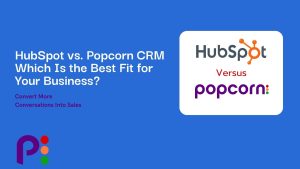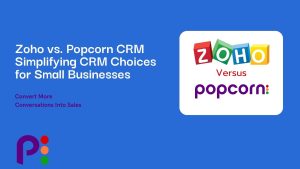We’ve talked before about the benefits of using marketing automation with your CRM. It takes a weight off your shoulders; it gives you extra time and money; it makes it easier to use all aspects of your CRM together. A study by Investpro has even found businesses increase their lead generation by 80% from implementing marketing automation. So how does it work, and how should you should approach it?
Marketing Automation in popcorn
The concept of automation is to set up automated actions that are triggered by an activity undertaken by one of your contacts. These are managed through rules that you can setup and build up over time to streamline the process of your prospect relationship management. Eventually, your contacts will be carefully looked after, without you being forced to keep track of every single individual.
These actions can have a variety of outcomes: in popcorn, it may prompt the creation or removal of a new tag; it may add a contact to a specific sales pipeline, or return them to a section they had previously been in. It might send you an email to notify you of your contact’s activity.
Marketing Automation: Rivers and Rapids
With all of these possibilities, it can understandably get confusing attempting to approach setting up your automation.
Therefore, the best way to approach your automation is, as always, to follow your contacts’ journeys. The sales process isn’t consistent, nor is it static. Picturing it as a flow, like water, will allow you to be adaptable to the whims of your contacts.
Hold onto that analogy—it becomes important.

Fish, Not Frogs
Lots of people view data as being stored in buckets, being transported together to other buckets at certain points in time. As mentioned, the reality is that data is a lot more fluid.
So when your contacts are progressing through your sales pipeline, they’re not hopping from one stage to another. They’re fish, not frogs. The journey can be long and meandering, and sometimes the fish go back on themselves. But you’re directing the flow of water, and through time and movement, you can get them to where they need to be. The knowledge you accumulate, such as their tags, behaviours and sales that you build up over time, will determine the flow of the water.
This is a core principle of prospect relationship management: knowing your contacts as individuals, and being able to identify their behaviours to make the process smoother. Automation is an important part of this.
Lazy Rivers
You’ve already got a subscription going; you’ll be sending content to your contacts already, in a newsletter etc. There’s no urgency involved as these contacts here only require general information, a periodic reminder of your existence. This is similar to them floating in a lazy river; there’s enough of a flow for them to move around, quite content, but it’s not fast enough that they want to, or have to, leave. They’re cool prospects, and they’re nowhere near the sales conversation.
But if a contact starts engaging with your company more, you need to know about it. You might be tempted to set up an automation rule when they open your email—but this is just a vanity measure, and doesn’t mean anything tangible. Other actions that increase their prospect score—clicking on a specific page on your website twice, downloading content from a specific page, contacting you specifically—are all actions that should be attended to.
Marketing Automation: Rapids
This activity means your contact is wanting to progress from a lazy river to a rapid. Here is where your communication with your contact needs to be increased, and fine-tuned to what they’re looking at. Your automation kicks in: first, you can set up a rule to be notified about their actions. But because you’ll be wanting to interest them further with more specific content, you’ll need to set up a rule to ‘put them’ in that rapid: you might add them to a specific campaign, or notify you with a reminder to call them. You might, for example, set up a rule that adds a tag when they look at specific products. Your automation might then send them content about those specific products.
This increased engagement will take the effort out of your nurturing. Your prospect scoring will continue, and if all things go well, their score will continue to rise. They’ll be bolstered by your responsive activity, and this will push them closer to being ready to buy.

Bridge Over Slower Water
This isn’t always the case, of course; there’s never a 100% effectiveness rate. If your prospect slows down and stops engaging, you can set rules so your automatic activity adjusts with your contact. After all, contacts who aren’t interested don’t want to be bombarded by emails. You can put them back into the lazy river, and you’ll have an opportunity to nurture them further another time.
And even if it does work, your customers won’t want to be sold to when they’ve already made their purchase. Therefore, you can set up a rule that gets triggered when recognising a purchase; it will switch your content to send them purchase confirmation emails, or invitations to leave a review, and so on. This is another lazy river, with content being sent periodically, but the intention of the content you’re sending is different to the original lazy river your customers were floating in.
Building a Map for Your Marketing Automation
It’s a lot of rivers and rapids. It can be a lot—we know. Though the idea is to set rules for processes that can flow into each other depending on the action taken, this can be built up over time.
You know your business, and you know the way your sales pipelines work. If you can visualise the flows of these actions, perhaps by drawing them out first, this will make it easier for you to set them up. Then it will be a case of practicing and refining the process as it goes along, and adding automation if and when needed. Eventually, you’ll have a whole map of rivers and rapids that flow into each other, making your work easier in the process.
If you want to read up on this concept further, our free training course covers this topic with an example to demonstrate the different ways your automation can engage with a prospect.











